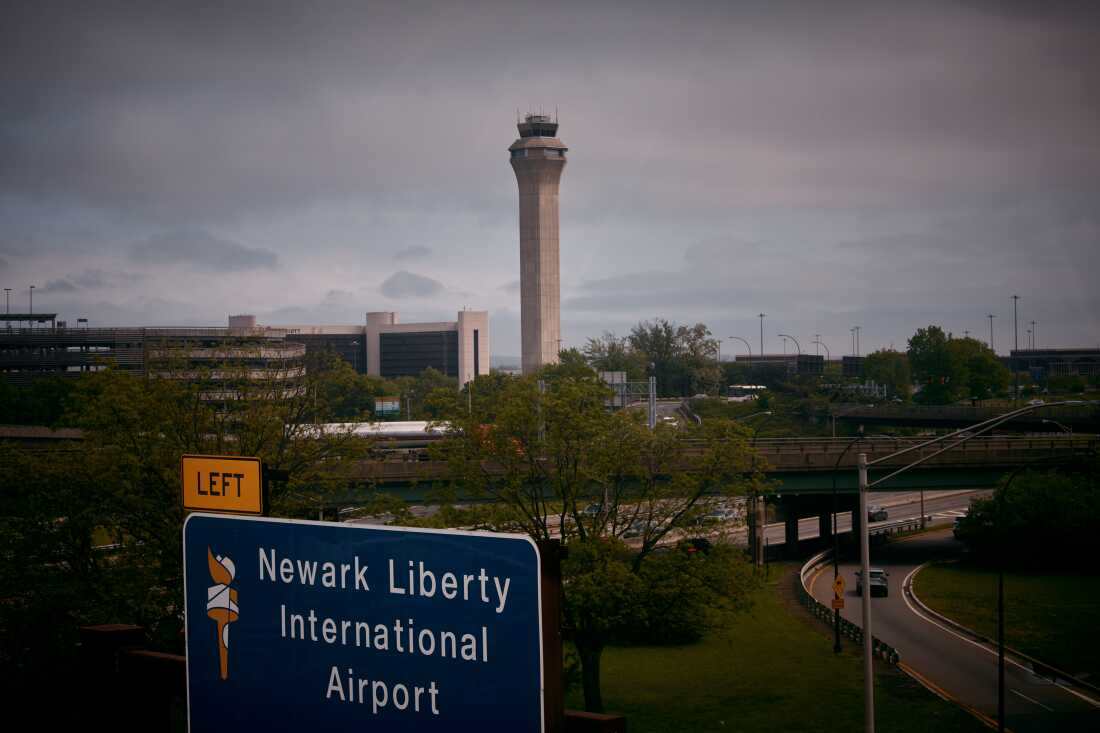
A airport control tower is seen at Newark Liberty International Airport in New Jersey on May 6.
Andres Kudacki / Getty Images
hide
tilting legend
Andres Kudacki / Getty Images
On Monday evening, there were as little as three air traffic controllers in a Philadelphia radar center scheduled each hour to guide the planes flying in and outside the Newark Liberty International Airport, according to the Federal Aviation Administration.
It is despite an objective of 14 air traffic controllers for this period, according to an agreement between the FAA and the union of air traffic controllers, The New York Times reported. NPR has not independently confirmed this report. The FAA did not answer the question of NPR on the agreement, and the union did not answer several requests for comments.

In a statement sent by email to NPR, FAA spokesperson Rick Breitenfeldt, said that “at least three controllers were scheduled for each hour” at the Philadelphia establishment which manages air traffic in Newark on Monday evening.
“We are planning staff endowment with traffic management initiatives to ensure that security is never compromised,” added Breitenfeldt.
Monday evening staff came while FAA is struggling to smoothly pouring through one of the country’s busiest airports, where technological problems, a shortage of workers and ongoing construction have hindered operations in recent weeks.
To meet these challenges, the FAA slowed down arrivals and departures to Newark, leading to dozens of cancellations and delays for frustrated leaflets.
“If we reduce the number of flights to Newark, we don’t do it to bother people. We don’t do it to delay people’s trips. What we do is guarantee security,” said Sean Duffy, Secretary of Transport, at a press conference on Monday.

While air traffic controllers in the airport tower manage flying traffic within a radius of a few miles where it is often visible to the eye, control of the terminal radar approach – or Tracon – directs the incoming and outgoing plans which are more distant from an airport.
The management of traffic in flight in Newark was moved from Long Island to Philadelphia last summer. (Duffy said that the Biden administration has “missed” relocation and has not resolved the technical problems that appeared in the fall.)
The part of the installation of Philadelphia controlling Newark Airpace has 22 fully certified controllers and five fully certified supervisors, FAA said in a separate statement on Tuesday. There are also 21 controllers and supervisors in training – 10 of which receive training during employment and are certified in at least one position, which means that they can work without supervision of an instructor.
The agency also stressed that the United States faces a national shortage of air controllers and said that the endowment targets for Newark air space have not been achieved for years.

The low levels of staff in Newark worried certain travelers, but a shortage of controllers would probably not represent a threat to passenger safety, explains John Hansman, professor of aeronautics and astronautics at Massachusetts Institute of Technology.
“We direct the system in a very prudent and very safe way,” said Hansman. In most cases, an insufficient number of air traffic controllers simply slows traffic slowdown, he said.
“If you arrive at this very extreme case in which we seem to be, then you have secondary concerns about fatigue and stress, and Cetera, which can degrade performance, but I don’t think we have necessarily seen it at this stage,” added Hansman.
Brief communication breakdowns in Philadelphia at the end of April and early May led operations in Newark. After the first incident, several air traffic controllers took up leave in response to the stress and the trauma they have known, previously reported NPR.
On Sunday, another telecommunications problem in Philadelphia briefly slowed down traffic in Newark, but Duffy said that on Friday night’s software update had managed a functioning redundant communication line and prevented a full -fledged failure.
Duffy described the national “outdated” air traffic control system and last week announced a plan to revise it.


